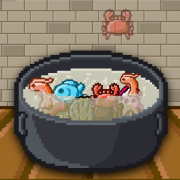Advertisement Space
Survive the Diner After Dark
Advertisement Space
Keep exploring
Keep the momentum going with more arena racers, action trials, and puzzle standouts.

Pacman 30th Anniversary: A Classic Reborn

Play Wheelie Life 2 in Your Browser

Infinite Chef: Your Ultimate Cooking Simulator

Guess the hidden Clash card in five tries

Steal A Brainrot Unblocked – Design killer vaults, raid rival bases, and turn every meme heist into profit

Play NSR Street Car Racing Online

Jump into Bite-Sized Kart Warfare

Jump Into Bloxd io — Parkour, Builder, and PvP in One Tab

Domino logic with crisp daily challenges

Play instantly in your browser—no download
Live Through Every Shift at Fredbear’s
Free-roam survival where every sound is a warning
Those Nights At Fredbears drops you into an abandoned family restaurant after closing time and lets you move on your own terms. Instead of sitting behind security feeds, you walk the halls, check service rooms, and choose when to hide, sprint, or hold still. Those Nights At Fredbears emphasizes keen hearing, pattern recognition, and quick judgement as you track mechanical footsteps, scrape marks, and sudden silences that often mean danger. With each hour that passes, the pressure builds and your options narrow—yet smart routing and careful listening can still pull you through.
As a roaming survivor, you decide the route through dining floors, corridors, and staff-only spaces while making tradeoffs between information and safety. Documents, spare fuses, and odd props may spill clues about what happened here and how the animatronics changed. That knowledge is power—but in Those Nights At Fredbears, every second spent reading or searching is a second the predators use to reposition. The result is a tense loop where exploration fuels survival, and survival unlocks more to explore.
What sets this nightmare apart
Unlike static camera games, Those Nights At Fredbears builds dread from presence. You are physically in the space with the threats that hunt you, and they adapt across the week. Early encounters teach rhythms; later ones betray expectations. Doors you trusted may lock, routes you mapped may shift, and behaviors you mastered may evolve. Because the game relies on environmental storytelling, you piece together the incident by finding notes, scribbles, and backstage fragments—each detail deepening the mystery and sharpening your tactics for the next shift. The more you learn in Those Nights At Fredbears, the more precisely you predict danger and carve out safe windows to move.
Movement, evasion, and reading the room
Your most valuable skill in Those Nights At Fredbears is spatial awareness. Peek around corners, hug shadows, and treat each doorway like a question. Is the floor squeaky? Is the air vent vibrating? Did the background fan suddenly cut out? These micro-cues guide when to hold position and when to cross open spaces. Sprinting buys distance but invites attention; creeping preserves stealth but costs precious time. Mastering that balance is the core of Those Nights At Fredbears and the reason every safe arrival feels earned.
Sound first, sight second
Audio design is your compass. In Those Nights At Fredbears, a faint clank can indicate a route change, while a rhythmic stomp may mean a patrol loop you can exploit. Headphones are recommended because directionality matters. Tracking a threat by ear lets you avoid line of sight entirely, turning the map into a puzzle of safe arcs and risky shortcuts. When silence falls in Those Nights At Fredbears, assume something has shifted—use that moment to re-evaluate routes or duck into cover.
Tools, power, and calculated risk
Resources are limited by design. You may have a flashlight that drains, breakers that trip, or doors that consume power to hold shut. In Those Nights At Fredbears, every toggle and battery tick is a decision with consequences. Spend light to verify a path or save it for an emergency? Reboot a fuse box now or push deeper while the grid is unstable? Scattered documents, checklists, and repair slips often hide hints about systems and weaknesses. The more you collect in Those Nights At Fredbears, the better your odds—but the hunt for intel exposes you to ambush.
Escalation across the week
Each night layers on new complications: smarter patrols, rerouted corridors, stricter objectives, and occasionally mandatory tasks that pull you into contested rooms. The AI ramps in subtle ways—timings change, attention spans lengthen, and bait behavior emerges. By midweek, Those Nights At Fredbears demands that you chain multiple skills: listening for tells, memorizing safe pockets, and executing quick detours when a plan collapses. That rising curve keeps victories tense and failures instructive.
Strategy for consistent clears
Establish a mental map early. In Those Nights At Fredbears, mark three essentials: a quiet fallback spot, a resource cache, and a cross-map corridor with multiple exits. Cycle through them as conditions shift. If a path feels suspiciously quiet, assume an interception pattern and test with a short advance, then retreat. When you must commit, commit decisively—hesitation in Those Nights At Fredbears often burns time without improving safety. After each narrow escape, pause to breathe, listen, and reset your plan.
Environmental story that rewards curiosity
Clues explain who worked here, what went wrong, and why certain rooms feel different at specific hours. Small world details—party schedules, maintenance notes, doodles—combine into a timeline you can act on. In Those Nights At Fredbears, story is not just flavor; it is practical intelligence that helps you anticipate patrols and identify high-risk choke points. The richer your understanding, the less you rely on luck.
Practical tips for your first week
1) Wear headphones so you can triangulate. 2) Keep one emergency route in mind at all times. 3) Conserve power until the late hour when routes compress. 4) Read every document you safely can; patterns repeat. 5) If you must cross a bright space in Those Nights At Fredbears, wait for mechanical noise to mask your steps. 6) When chased, break line of sight and change elevation if possible. 7) Don’t over-loot; a partial clue that keeps you alive beats a perfect clue that gets you caught.
Why free exploration amplifies fear
Being able to move anywhere means you can also make the wrong choice at any time. That uncertainty is the heartbeat of Those Nights At Fredbears. The map is open, but routes are contested; information is available, but time is scarce. Mastery comes from learning the ebb and flow of patrols, exploiting brief windows, and trusting your read on the room. When the exit chime finally rings, it feels like you earned it because, in Those Nights At Fredbears, you truly did.
Built for players who think before they sprint
If you enjoy slow-burn tension, reactive planning, and stories told through space rather than cutscenes, this experience is for you. Those Nights At Fredbears asks you to be patient, observant, and methodical. The more deliberate your approach, the more the game gives back—new shortcuts, safer timings, and secrets that reshape how you tackle later objectives. With practice, your ears grow sharper, your routes cleaner, and your nights shorter—proof that in Those Nights At Fredbears, knowledge is the most reliable weapon.
Answer the dark and make it to morning
The restaurant is a maze, the machines are learning, and the clock refuses to hurry. Yet every night survived widens your understanding and edges you closer to the truth. Keep moving, keep listening, and keep your nerve. In Those Nights At Fredbears, morning always comes—if you make the right choices before the lights go out.
Survive the Diner After Dark is ready to play
Face adaptive animatronics in Those Nights At Fredbears. Explore freely, track audio cues, manage scarce tools, and survive escalating night-by-night terror.
Share Survive the Diner After Dark
Spread the word, invite friends, or bookmark this page to revisit the story whenever you need it.